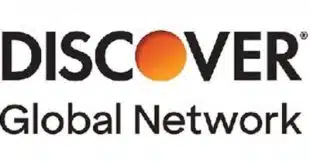Amazon’s latest technology has the contactless trend on its side, but experts question its mainstream usefulness.
Amazon.com Inc.’s culture is rooted in three primary principles: Don’t be afraid to take risks; find new ways to engage with customers; and imagine what consumers want before they do.
Those principles have helped build Amazon.com into the preeminent e-commerce marketplace capable of introducing innovative technologies to grow its business—think one-click checkout, delivery drones, and Amazon Web Services.
On the other hand, those same principles have led the company into some disastrous, and costly, technologies, including the Fire Phone, Amazon Register, and the Amazon iOS Kindle App.
It was no surprise, then, that Amazon in September officially announced its long-rumored biometric palm reader, Amazon One, to great fanfare. The technology, which is undergoing testing in two Amazon GO stores in Seattle, is being positioned as a cutting-edge way to authenticate consumers and introduce a new form of contactless payments.
Amazon wouldn’t talk to Digital Transactions about Amazon One, instead referring us to its blog post announcing the technology. In the post, Amazon said the new technology was developed to further reduce friction and wasted time for customers when paying or presenting a loyalty card at the point-of-sale.
Indeed, Amazon One is intended to offer a “quick, reliable, and secure way for people to identify themselves or authorize a transaction while moving seamlessly through their day,” Amazon said in the post.
The e-commerce giant also mused about eventually offering the technology to other retailers. It could become an alternative payment or loyalty card option at checkout, complementing a standard POS terminal. Other potential applications include ticketing and consumer authentication to enter a building or office suite.
Marketing Amazon One to other merchants would match Amazon’s DNA. The e-commerce giant already offers Amazon Pay, a quick-click service, to other e-commerce sellers (“Primetime for Amazon Pay,” February 2018).
As is the case with the introduction of any new technology, timing plays a role in how well it does. And the timing for the introduction of Amazon One couldn’t be better, as merchants have fast-tracked the deployment of contactless technology in response to the Covid-19 pandemic.
“Amazon One is a contactless payment option that fits the contactless payment craze,” says Nick Starai, chief strategy officer for NMI, a Schaumburg, Ill.-based provider of payment gateways for independent sales organizations, independent software vendors and payment facilitators.
‘A Perception Issue’
To open an account and register a palm print on Amazon One, the consumer inserts a credit card into an Amazon One terminal. Next, the consumer waves her palm over the device so it can be scanned, and then follows the prompts to link her card to her palm print.
Since no two palm prints are alike, Amazon One analyzes all identifying characteristics of a consumer’s palm using computer-vision technology and selects the most distinct identifiers to create a palm signature. Consumers can register one or both palm prints.
Once a consumer has registered her palm print, she can enter an Amazon Go store by scanning her palm at the entry turnstile, which lets the store know she is on premise and ready to shop. When she is finished shopping, she can exit the store and her credit card will automatically be billed for the items in her cart.
Consumers also have the option to link their Amazon account to Amazon One, which will allow them to manage their account and see their purchase history online.
Prior to Amazon One, Amazon GO shoppers were required to open the Amazon GO app to enable cashierless checkout. Cashierless entry and checkout in Amazon Go stores is made possible by computer vision and sensors throughout Amazon Go stores that automatically detect when products are removed from the shelves and placed in a virtual shopping cart (“The Amazing Disappearing Checkout,” April 2019).
While the concept of biometric authentication for payments is not new, one key advantage Amazon One has is that it does not require a facial scan, with which many consumers are uncomfortable, or scanning a fingerprint or thumbprint, which requires touching a surface.
“There is a perception issue that comes with biometrics,” says Jacques Fu, chief technology officer for payment processor Fattmerchant Inc. “Consumers are sensitive to facial recognition, just as they are to touching screens in public in the midst of a pandemic. They may be more comfortable scanning a palm print because it’s a contactless process.”
The rapid adoption of contactless technology during the pandemic has provided merchants with a sales boost in certain markets and regions around the world.
“We’ve seen a lift in volume from contactless acceptance in other countries, such as Australia,” Fu says. “Right now, contactless payments are a no-brainer for payments. Why not take a look at other contactless technologies that can speed transactions and potentially increase volume?”
‘An Uphill Battle’
Experimenting with alternatives to established contactless payment technologies, such as tap-and-go and mobile wallets, makes sense. And Amazon certainly has the financial resources to push an alternative technology, payment experts say. But the big question is: Will consumers embrace Amazon One?
“There are going to be early technology adopters among consumers, but to reach mass adoption, at least 40% of the population needs to be using the technology,” says Krista Tedder, director of payments for Pleasanton, Calif.-based Javelin Strategy and Research. “While biometrics are being tested outside of payment, I don’t see Americans being comfortable enough to use palm readers at the point of sale. It can be perceived as a little Big Brotherish.”
Another major question facing Amazon is whether other retailers would be willing to buy a payment technology from a high-powered competitor such as Amazon.
The answer is: Don’t bet on it, according to at least some observers. “It’s unlikely this technology will advance beyond Amazon stores, because there is really no incentive for other merchants to embrace it,” Fu says.
Besides, other software developers could replicate the technology to compete with Amazon, says Raymond Pucci, director of the merchant services practice at Mercator Advisory Group, Marlborough, Mass. If that were to happen, Amazon still could make use of Amazon One between Amazon Go and Whole Foods stores, if they wanted, Pucci adds.
Whether Amazon intends to keep Amazon One strictly for in-house use remains to be seen. In the blog post announcing Amazon One, the company said it expects to add the technology to other Amazon stores beyond Amazon Go—Whole Foods has 400 locations—and that it believes the technology has broad applicability beyond its retail stores.
“We also plan to offer the service to third parties like retailers, stadiums, and office buildings so that more people can benefit from this ease and convenience in more places,” Amazon said in its blog.
But if other retailers are unlikely to deploy the technology, the prospects for entertainment and sports venues adopting Amazon One for digital ticketing don’t look much more promising. That’s because consumers can already download event tickets to their smart phone in the form of a bar code or QR code.
“With what smart phones can do now in regard to ticketing and payment, it will be an uphill battle for Amazon One to overtake the phone,” says Frank Pagano, executive sales director for VizyPay LLC, a processor for small businesses.
Overkill for Payments?
But does Amazon One add value in the form of security, particularly for large-value payments, such as transfers between firms? “It could be a way to authenticate that the person initiating the [business-to-business] transaction is authorized to do so,” says Tedder.
Concurrently, the technology could be adapted by airlines to validate the identity of consumers boarding a plane with an e-ticket, Pagano adds.
But, while security is a critical element of payments, card experts point out that payments security is more than sufficient, especially with contactless transactions. “While Amazon One offers a high level of security, it doesn’t add much value from a payments perspective,” says Pagano.
In fact, some payments experts argue Amazon One is overkill for payments. “Amazon One is probably more than consumers and merchants need for payment security and convenience, but testing it may open the door to other ways it can be used,” says Mercator’s Pucci. “Amazon has a habit of testing technology and using the knowledge gained elsewhere in its business.”
Other observers agree. “Amazon is pushing the idea that Amazon One is a way for consumers to have their payment credentials with them at all times, but sometimes testing a technology is more about other uses it may have,” says NMI’s Starai.
And sometimes technology trials don’t always bear fruit. While Amazon has successfully tested many new technologies, it has also had failures. But with Amazon One, the point may be to learn as much from failure as from success.
Says Tedder: “Amazon doesn’t need to succeed with Amazon One, because they can afford to test new technology and see what comes of it, even if the test fails.”




